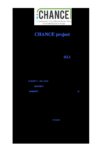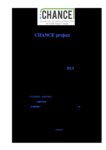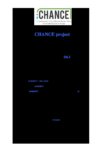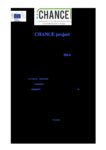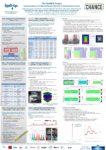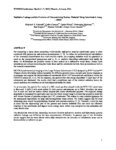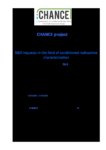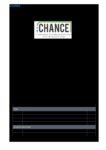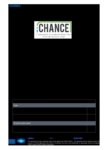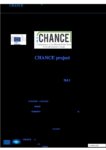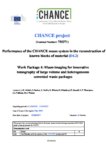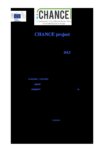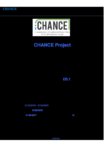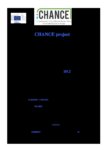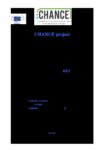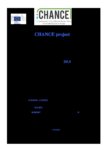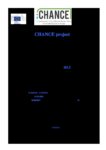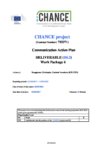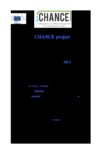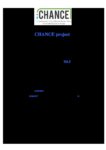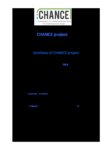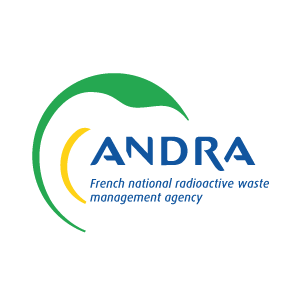CHANCE: Characterisation of conditioned nuclear waste for its safe disposal in Europe
The CHANCE project (Characterisation of conditioned nuclear waste for its safe disposal in Europe) developed calorimetry, muon scattering tomography and cavity ring down spectroscopy as innovative techniques for the non-destructive characterisation of conditioned radioactive waste. The project also developed a comprehensive understanding of existing characterisation methods and quality control schemes for conditioned radioactive waste in Europe.
Overview
Project Dates: 1/06/2017 – 31/03/2022
Project Status: Finished
Project Website: www.chance-h2020.eu
Safe interim storage and final disposal of radioactive waste requires effective characterisation and quality control of the waste. Therefore, the CHANCE (Characterisation of conditioned nuclear waste for its safe disposal in Europe) project aimed to address the specific and complex issue of the characterisation of Conditioned Radioactive Waste (CRW) by means of non-destructive analytical techniques and methodologies.
The CHANCE project developed reviews of existing characterisation issues based on the input of end-users and identified links and overlaps between waste acceptance criteria and actual waste characterisation technologies available. The project identified a number of specific, unsolved, methodology issues and technology gaps.
The project further developed a set of novel characterisation techniques to help address outstanding issues in the field of non-destructive CRW characterisation. These techniques were:
- Calorimetry as an innovative non-destructive technique to reduce uncertainties on the inventory of radionuclides.
- Muon Tomography to address the specific issue of non-destructive characterisation of the material content of large volume nuclear waste.
- Cavity Ring-Down Spectroscopy (CRDS) as an innovative technique to characterise outgassing of radioactive waste.
Objective
Characterisation issues within CHANCE encompassed both physico-chemical characterisation and radiological characterisation. The experimental focus within CHANCE was radioactive waste held in large volume compounds potentially containing hidden components, spent fuel held in large volume storage containers, problematic and legacy waste, specific waste arising from repair or maintenance, decommissioning/dismantling waste and radioactive waste destined for geological disposal.
The first objective of CHANCE was to establish at the European level a comprehensive understanding of current conditioned radioactive waste characterisation and quality control schemes across the variety of different national radioactive waste management programmes, based on inputs from end-users such as waste management organisations and storage operators. CHANCE aimed to focus on the following waste forms (using the IAEA classification):
- Very Low Level Waste (VLLW);
- Low Level Waste (LLW);
- Intermediate Level Waste (ILW);
- High Level Waste (HLW).
Very short-lived waste and Exempt Waste were beyond the scope of CHANCE as these kinds of waste are not destined for radioactive waste disposal. The establishment of a “waste characterisation catalogue” as part of the project was to enable the short-comings of state-of-the-art characterisation of conditioned radioactive waste to be identified. The first objective of the project was addressed in Work Package 2 of the CHANCE project.
The second objective of CHANCE was to further develop, test and validate a set of three novel techniques already identified that were expected to improve the characterisation of conditioned radioactive waste, namely those that cannot easily be dealt with using conventional methods. The identified characterisation methods developed by chance were:
- Calorimetry (Work Package 3) as an innovative non-destructive technique to reduce uncertainties on the inventory of radionuclides (RN), namely from hidden RN-compounds with a weak gamma signal.
- Muon Tomography (Work Package 4) to address the specific issue of the non-destructive interrogation of the content of large volume RW.
- Cavity Ring-Down Spectroscopy (Work Package 5) as an innovative technique to characterize outgassing of RW at a very low detection level.
The CHANCE project prioritised obtaining input from “end users” (mainly waste management organisations and waste producers) on methods of conditioned radioactive waste characterisation. Therefore, an objective of the CHANCE project was to establish a dedicated End-Users Group (EUG) in order to represent and promote the interests and requirements of end-users. The technical and strategic work packages of the project were supported by Work Package 1 (management and coordination) and Work Package 6 (dissemination).
Results
The CHANCE project established an EUG comprised of 20 member organisations which included Waste Management Organisations, Nuclear Facility Operators, Technical Support Organisations and research entities from ten European countries. This enabled the primary extant needs for the characterisation of conditioned radioactive waste among these end-users to be identified through a questionnaire.
Work Package 2 synthesised the results of the questionnaire identifying the following characterisation challenges described by the EUG:
- The proper characterization of conditioned legacy/ historical waste packages
- The determination of alpha and beta activities in conditioned RW due to signal attenuation by the waste packages and backfill (compacted drums, concrete)
- The detection of difficult to measure isotopes and sealed radioactive sources
- The limited traceability of the chemical content of waste packages
- The accessibility of the waste for sampling, difficulties in monitoring waste drums packed deeply in a storage facility
- The characterization and reconditioning of the waste already stored in a storage facility
R&D needs described by the EUG mainly related to the development of novel non-destructive methods capable of detecting the radiological (including α and β emitters) and fissile mass content as well as the chemical content of a range of conditioned waste packages.
Work Package 3 was focused on the development of calorimetry to measure the heat generation of a package and therefore infer information about the activity. A study of the uncertainties related to existing characterisation methods in conjunction with calorimetry was undertaken. Focusing on gamma and neutron methods, MCNP simulations were undertaken to determine the effect of different drum contents and arrangements on the detectable gamma/neutron flux emerging from a 200L drum. It was shown that gamma flux can be attenuated by a factor of two orders of magnitude while neutron flux can be attenuated by a factor of two. The heat flux conversely, was shown to remain largely unaffected, demonstrating the utility of calorimetry as a complementary technology.
A large calorimeter (10-3000mW range) capable of hosting a 200L drum was built for the project and tested on a number of drums, including a real waste package and a number of mock-ups. Thermal power measurements were successfully made on the trial drums and demonstrated substantially less sensitivity to source position than conventional radiometric characterisation techniques which were used in parallel. The minimum detectable power of the system was 5-15 mW under good conditions.
Work Package 4 developed a Muon Scattering Tomography system as a mobile solution for non-destructive assay of large volume nuclear waste packages. A tomography system consisting of resistive plate chambers for muon tracking and plastic scintillator triggers panels was developed. The system was supported by the development of algorithms for the identification of objects in radioactive waste packages including identification of uranium and a new approach to gas bubble and void detection.
Work Package 5 explored the application of CRDS to the detection of outgassing from radioactive waste packages. The implementation of CRDS method in measuring outgassing of 14C from graphite was demonstrated successfully. The measurements showed good repeatability and accuracy. The technique was also successfully used to measure small amounts of 14C from spent ion-exchange resins in real-time. The detection of H36Cl was shown to be possible with CRDS as suitable absorption lines were experimentally measured, the detection of 36Cl in actual nuclear wastes with this technique would however be challenging due to the low concentrations expected in the outgases.




